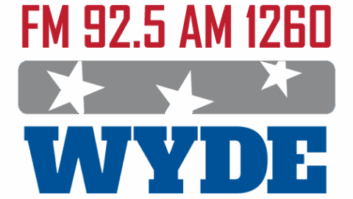With many cellphones capable of receiving multimedia Web content, it was only a matter of time before someone offered satellite-quality pay audio to cellular subscribers.
A content provider with the unlikely name of MSpot is providing 13 channels of commercial-free audio – eight music and five talk – to Sprint Wireless subscribers. For $5.95 a month, Sprint multimedia handset owners can plug a pair of earbuds into their cellphones and get unlimited access to hiphop, rock and country music channels, among others, plus channels dedicated to NPR, the Associated Press and other content providers.
“Since audio doesn’t require much bandwidth for streaming, we don’t have to wait until high-speed EVDO wireless networks are deployed to distribute MSpot,” said Daren Tsui, the company’s CEO. “In fact, we can serve the majority of the U.S. cellular population today.”
How MSpot Works
The MSpot Radio service starts with a “big collection of servers,” Tsui said. “These are connected to high-bandwidth feeds from NPR, AP, the Sporting News, MarketWatch and AccuWeather, which we program into separate audio channels.” Meanwhile, “we have a large database of music WAV files, which we program into eight music channels.”
Once assembled, MSpot Radio’s 13 channels are fed directly to Sprint, which distributes them nationwide as part of its Sprint Vision package. Priced from $15 to $25 a month, Sprint Vision also carries video clips from ABC, Fox Sports and TV shows such as “Trading Spaces,” “American Chopper” and “Kenny the Shark.” The MSpot Radio package costs $5.95 a month extra on Sprint, currently MSpot’s sole wireless carrier.
At the receiving end, MSpot’s service is accessed directly through a Sprint Vision subscriber’s multimedia handset – at present, either a Sanyo MM-5600 or Sanyo MM-7400.
“Both of these handsets come with pre-installed media players, so all the subscriber has to do is scroll through a series of menus to get to the audio feed they want,” Tsui said.
Worth noting: MSpot may be geared to delivering continuous audio, but subscribers can also select the specific news, weather and sports clips they want. Meanwhile, although MSpot has yet to offer local news and live traffic, “we do have local weather through AccuWeather,” Tsui said. “This is because AccuWeather offers local coverage for over 80 metro U.S. markets, plus a number of regional and national forecasts.”
Impact?
For those broadcasters who belong to MSpot’s channel lineup, the advent of “Cell Radio” is nothing but good news.
NPR Online Vice President/General Manager Maria Thomas said, “Working with MSpot, we can give people up-to-the-minute news and the most popular NPR stories of the day, whenever and wherever they want.”
As for local broadcasters who find themselves competing against MSpot? For this group, the severity of the MSpot challenge depends on a few factors.
In the car during morning and evening commutes, it appears MSpot will appeal to those who want commercial-free music, and have some sort of interface device to feed MSpot’s audio into their car radios. Those equipped with cassette players can always plug a conventional cassette-to-CD adaptor into their cellphone and transport the audio this way. However, those with AM/FM/CD players will have to use external low-powered FM retransmitters, like the $69.95AC/DC portables sold by C. Crane and others.
However, if these same commuters want up-to-date traffic and weather reports, they’ll have to stay tuned to over-the-air local radio. The only exception will be those large U.S. markets where XM and Sirius satellite radio offer local traffic and weather updates.
Meanwhile, those wanting a wider range of commercial-free channels will likely turn to XM and Sirius, especially when they can hear them using in-dash AM/FM/satellite radio receivers that don’t require cassette/CD adaptors or external FM retransmitters.
A further impediment to MSpot is cost; the $5.95 per month is in addition to Sprint Vision’s $15-$25 monthly rate. (The actual MSpot price could be as low as 95 cents, if the Sprint subscriber applies the Vision plan’s $5 monthly programming credit to this service.)
Until this changes, and until MSpot finds its way onto other cellular carriers, the service’s market penetration is likely to be limited. Of course, the same was once said about satellite radio: Now XM and Sirius combined have over four million U.S. subscribers, and counting.
Is cell radio here to stay? Consider the links in its chain: The “receivers,” cellphones, exist and are growing in market penetration. The bandwidth and billing plans are in place. The content exists and is easy to package and distribute. And the listening public has demonstrated an appetite and willingness to pay for commercial-free radio, as XM and Sirius have shown.
“It blows my mind that nobody has launched something like MSpot yet,” said Daren Tsui. “In the future, we are planning to expand our music channels to 20 or more,” he said. “We are also creating a Java version of MSpot that can be heard on older cellphones capable of playing video games.”







